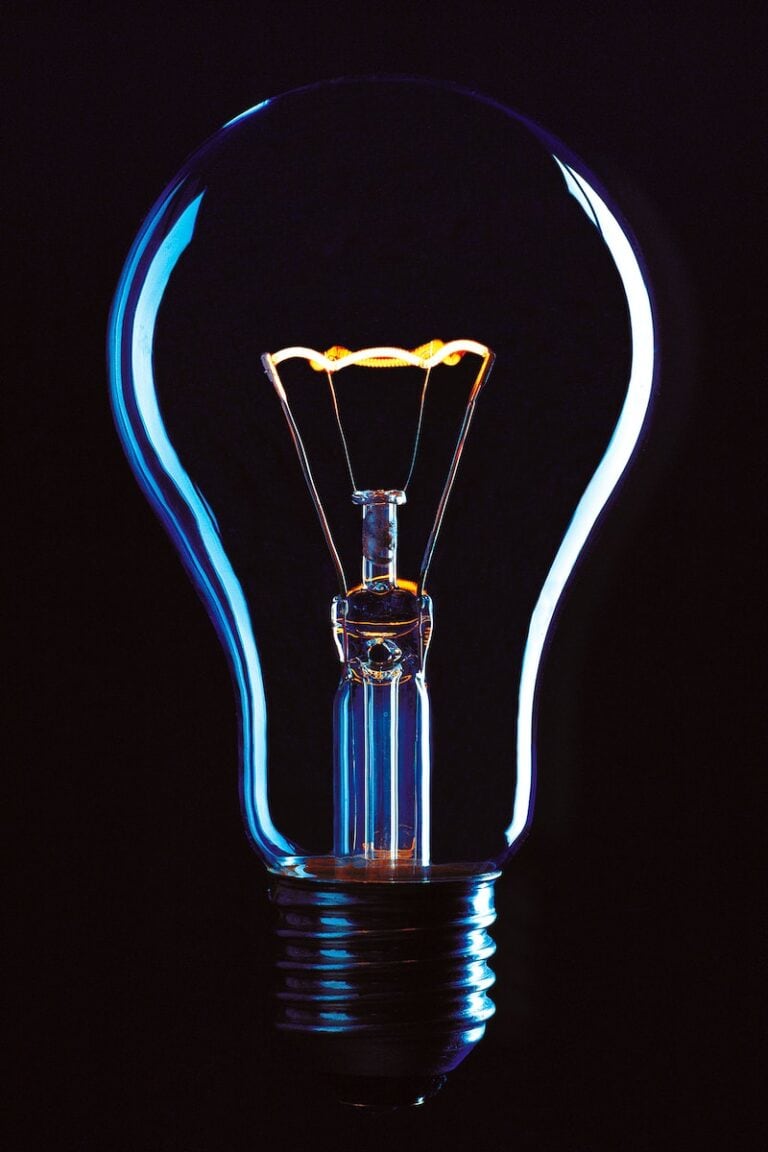It’s important to be mindful of how much energy they use. Here are some simple tips to help you save energy with your electronic devices: unplug chargers when they’re not in use, use power strips to easily turn off multiple devices at once, and adjust screen brightness to reduce energy consumption. Using these tips can help you use less energy and contribute to a healthier environment. In addition to these tips, using smart power strips and Energy Star certified products can also help you save energy.
It’s important to find ways to reduce energy use at home, especially with rising energy costs. Using energy-efficient appliances, insulating your home, sealing windows and doors, using LED lighting, and adjusting your thermostat wisely can all lead to noticeable savings on your energy bills.Furthermore, using renewable energy sources, such as solar panels, not only reduces environmental impact but also provides clean energy. By using less energy at home, we can help reduce emissions and create a healthier environment for everyone. Small actions can make a big difference and contribute to a more sustainable future.
Tips for Optimizing Energy Savings With Electronics
Reducing energy consumption from your electronic devices not only lowers your electricity bills but also helps reduce your environmental footprint. Here are effective tips to optimize energy savings with your electronics at home or work.
1. Choose Energy-Efficient Devices
- Look for Energy Star or equivalent certifications when buying new electronics.
- Energy-efficient devices use less power without sacrificing performance.
2. Unplug Devices When Not in Use
- Many electronics consume “phantom” or standby power even when turned off.
- Unplug chargers, TVs, computers, and other devices when not in use.
- Use power strips with switches to easily cut power to multiple devices.
3. Use Sleep or Power-Saving Modes
- Enable sleep, hibernate, or power-saving modes on computers, TVs, and other electronics.
- Set devices to enter low-power modes after periods of inactivity.
4. Optimize Settings for Energy Efficiency
- Lower screen brightness on monitors, TVs, and mobile devices.
- Reduce volume levels on speakers when full power is not needed.
- Disable unnecessary features like Bluetooth or Wi-Fi when not in use.
5. Manage Charging Smartly
- Avoid overcharging devices such as smartphones, laptops, and tablets.
- Disconnect devices once fully charged.
- Use smart chargers that stop charging automatically when full.
6. Upgrade to Smart Power Management
- Use smart plugs or smart power strips to schedule on/off times.
- Automate turning off devices during non-use hours.
7. Maintain Electronics Properly
- Keep devices clean and dust-free to prevent overheating and inefficiency.
- Regularly update software and firmware to ensure optimal performance.
8. Limit Use of High-Power Electronics
- Use energy-intensive devices like gaming consoles, heaters, or air conditioners only when necessary.
- Consider energy-efficient alternatives or limit usage time.
9. Use Timers and Motion Sensors
- Install timers or motion sensors to automatically turn off lights and electronics in unused rooms.
10. Monitor Energy Usage
- Use energy monitors or smart home systems to track consumption.
- Identify and address devices that consume excessive power.
Summary Table
| Tip | Benefit |
|---|---|
| Choose Energy-Efficient Devices | Lower baseline energy consumption |
| Unplug Devices | Eliminates standby power waste |
| Use Sleep/Power-Saving Modes | Reduces power during inactivity |
| Optimize Device Settings | Tailors energy use to needs |
| Manage Charging | Prevents unnecessary power use |
| Smart Power Management | Automates energy savings |
| Proper Maintenance | Keeps devices running efficiently |
| Limit High-Power Devices | Reduces peak energy demand |
| Use Timers/Motion Sensors | Avoids wasted energy |
| Monitor Usage | Identifies energy hogs |
By implementing these tips, you can significantly reduce your electronic devices’ energy consumption, save money, and contribute to a greener planet.
Optimizing Power Use: Your Electronics and the Planet
Your electronic devices are energy hogs. They suck power even when you’re not using them. But there are ways to cut back. By making a few changes, you can lower your energy bill and help the environment.
Unplug to Save Big
One of the easiest things you can do is unplug your chargers and other devices when they’re not in use. Many electronics continue to draw power even when they’re turned off or fully charged. This is called “vampire power” and it can add up over time. Unplug your phone charger, laptop charger, and other devices when you’re not using them to stop the energy drain.
Embrace Power Strips
Another easy fix is to plug your electronics into power strips. Then, when you’re not using them, you can easily switch off the whole strip. This cuts power to all the devices at once, including those that have vampire power.
Dim the Lights
Your TV and computer screen are big power users. Lowering the brightness of your screens can make a big difference. Many devices have power-saving settings that dim the screen automatically after a period of inactivity.
Turn Off and Unplug
If you’re not using a device, turn it off. Even better, unplug it. This includes your TV, computer, game console, and any other electronic devices that you’re not actively using.
Use Smart Power Strips
Smart power strips take energy saving to the next level. They can detect when a device is in standby mode and cut power to it automatically. Some even let you control them from your phone.
Choose Energy-Efficient Electronics
When you’re buying new electronics, look for the Energy Star label. This means the product meets certain energy-efficiency standards set by the government. Over time, energy-efficient devices will cost you less to operate.
A Quick Look at Energy-Saving Tips
| Tip | Description |
|---|---|
| Unplug chargers | Unplug chargers and devices when not in use to avoid “vampire power.” |
| Use power strips | Plug electronics into power strips so you can turn them off all at once. |
| Lower screen brightness | Reduce the brightness of your TV and computer screens. |
| Turn off and unplug | Turn off devices you’re not using and unplug them. |
| Use smart power strips | Consider using smart power strips to cut power to standby devices. |
| Buy Energy Star products | Choose electronics with the Energy Star label for better efficiency. |
Key Takeaways
- You can reduce energy bills with simple efficiency steps.
- Small habit changes lead to significant energy savings.
- Less energy use helps the environment.
Maximizing Home Energy Efficiency
Making your home energy-efficient saves money and reduces environmental impact. Focus on insulation, heating and cooling systems, efficient appliances, and smart home technology.
Understanding Energy Efficiency and Savings
Energy efficiency means using less power to get the same results. It can lead to lower energy bills and a more comfortable home. Start by assessing your home’s energy use with an energy audit. This assessment shows where energy is wasted and suggests improvements. Homeowners can take advantage of rebates for energy-efficient upgrades, making it more affordable to improve their homes.
Effective Thermal Insulation
Proper insulation helps reduce heat loss in winter and heat gain in summer. Focus on insulating the attic, walls, and floors. Use materials like fiberglass, foam, or cellulose. Weatherstripping and caulking seal gaps around doors and windows. This stops air leaks, making your home cosier and cutting down on energy waste. Insulation projects offer a high return on investment and save energy year-round.
Optimizing Heating and Cooling Systems
Heating and cooling consume about half of home energy use. Smart thermostats adjust temperatures based on your schedule, reducing energy waste. Consider upgrading to an Energy Star rated HVAC system. Ceiling fans can also help by circulating air and reducing the need for heating and cooling. Regular maintenance, like cleaning filters and checking ducts, keeps systems running efficiently.
Enhancing Water Heating Efficiency
Water heating is another big energy user. Insulate your water heater and pipes to keep water warm longer. Set the water temperature to 120°F to save energy and avoid scalding. Consider switching to a tankless water heater which heats water on demand. Regularly check for leaks and use low-flow fixtures to reduce hot water use.
Upgrading to Energy-Efficient Appliances and Equipment
Choosing energy-efficient appliances can greatly reduce energy use. Look for the Energy Star label when buying new appliances like refrigerators, washers, and air conditioners. They use less power and water, offering long-term savings. Upgrading lighting to LED bulbs also saves energy and lasts longer than traditional bulbs. Check for appliance rebates to save money on these investments.
Implementing Smart Home Energy Management
Smart home technology can help manage energy use efficiently. Smart plugs and power strips turn off electronics when not in use. Smart lighting systems adjust brightness based on time of day. A comprehensive smart home system can automate these features and provide insights into energy usage. Implementing smart technology can lead to significant energy and cost savings.
Frequently Asked Questions
This section answers common questions about energy savings. It covers calculating potential savings, effective measures, the benefits of energy saver programs, how devices reduce costs, recommended reduction methods, and tips for reading product reviews.
How can homeowners calculate their potential energy savings?
Homeowners can start by conducting a home energy audit. This audit provides a detailed assessment of energy use, identifying where improvements are needed. They may be eligible for a 30% tax credit on this audit.
Can you provide examples of effective energy-saving measures?
Examples include installing energy-efficient lighting like LEDs, upgrading to ENERGY STAR-certified appliances, and sealing windows and doors to prevent drafts. Simple actions like using programmable thermostats also help.
What are the benefits of participating in an Energy Saver program?
Participants in these programs often receive financial incentives, such as tax credits and rebates, for implementing energy-efficient upgrades. Moreover, they reduce their utility bills and contribute to environmental conservation.
How do energy-saving devices operate to reduce utility costs?
Energy-saving devices like smart thermostats adjust temperature settings automatically based on usage patterns. LED bulbs use less wattage compared to traditional bulbs. Power strips help turn off standby power from electronics.
What methods do professionals recommend for a reduction in energy consumption?
Professionals suggest methods like properly insulating homes, using energy-efficient HVAC systems, and conducting regular maintenance on all appliances to ensure they run efficiently. Reducing unnecessary lighting and unplugging devices when not in use also aid in saving energy.
What should consumers look for when reading reviews on energy-saving products?
Consumers should check for verified purchase reviews to ensure authenticity. Detailed feedback on product performance, ease of installation, and energy savings over time are crucial. Reviews from early adopters and those posted after extended use offer valuable insights.







